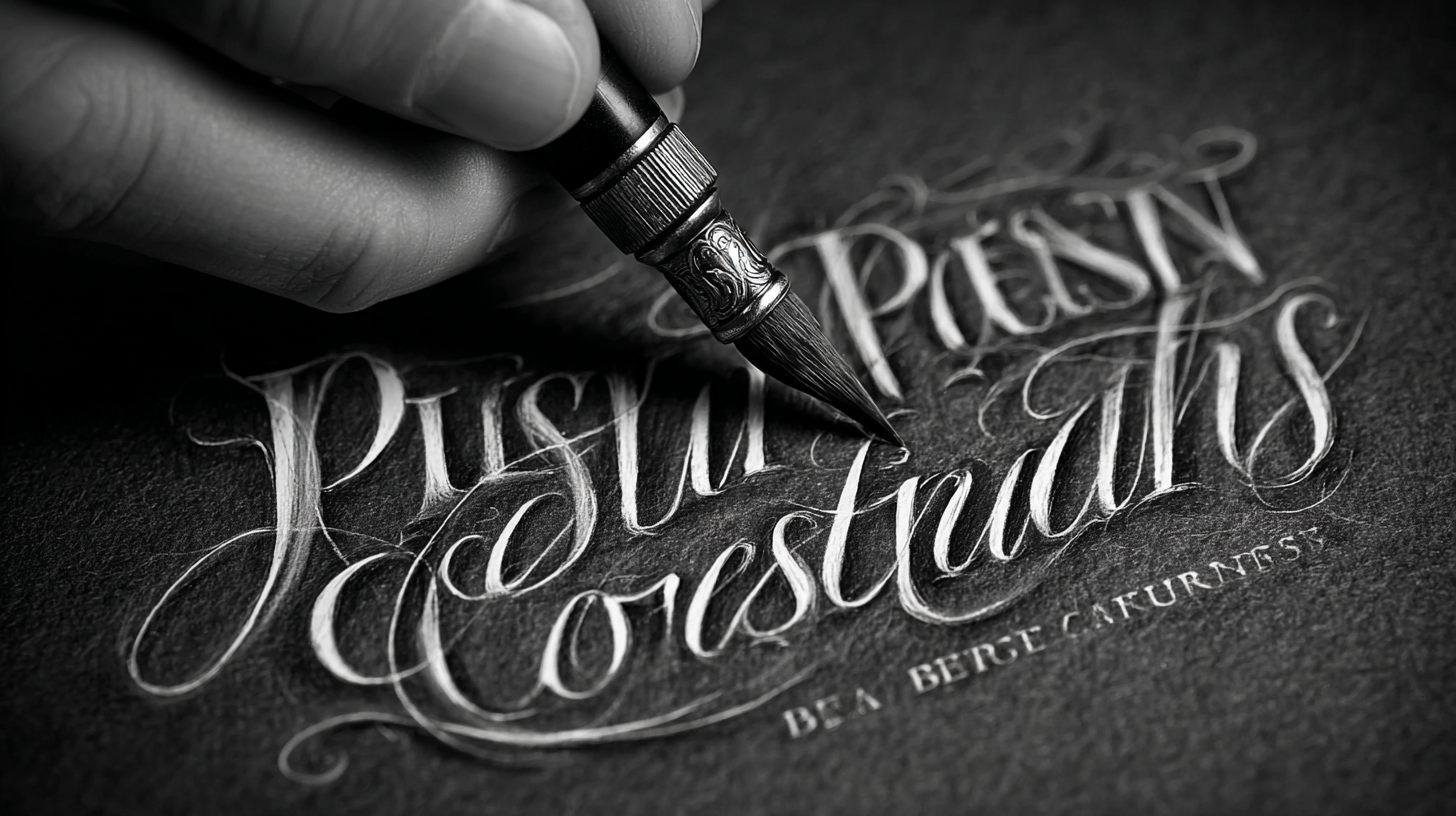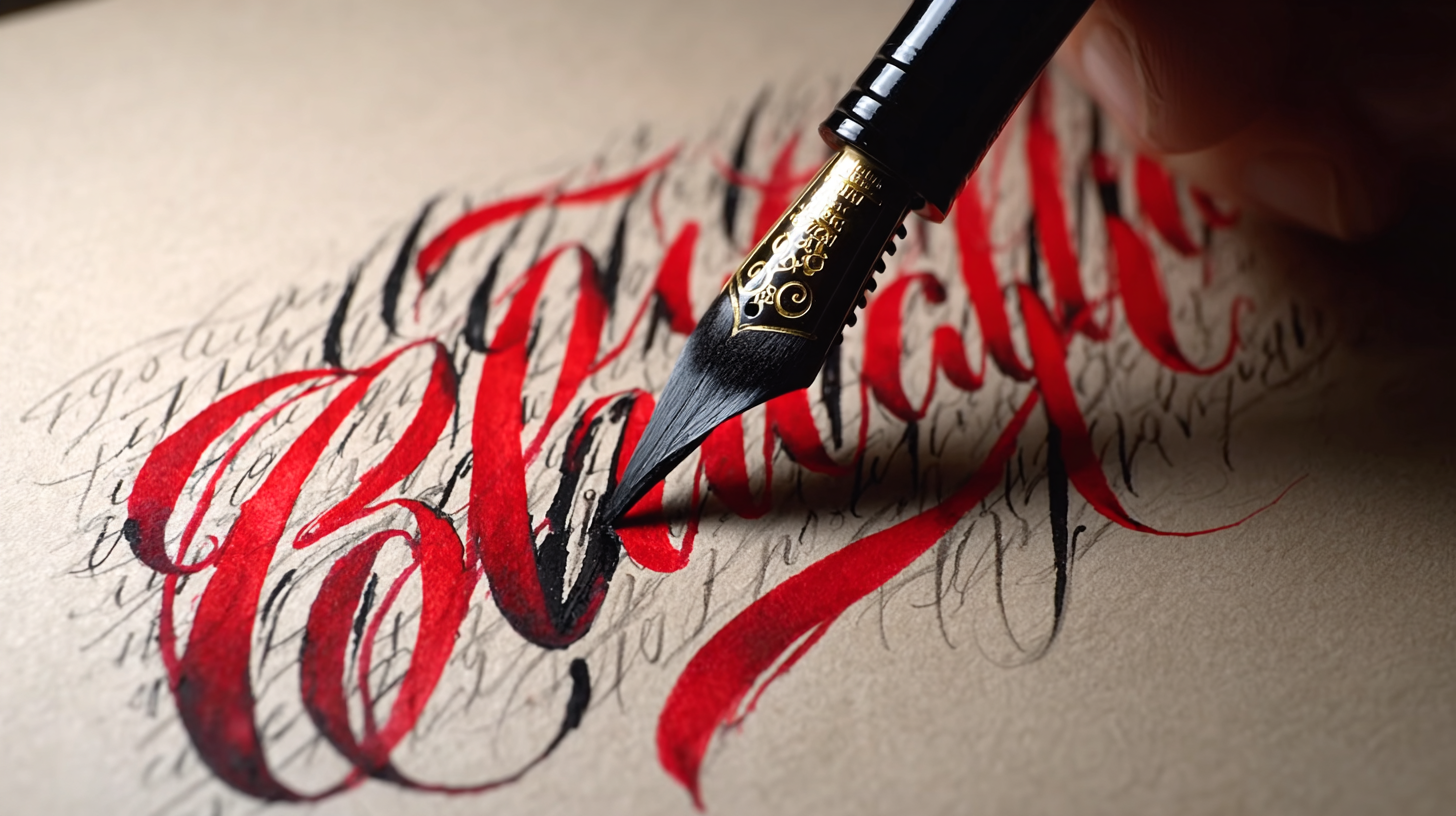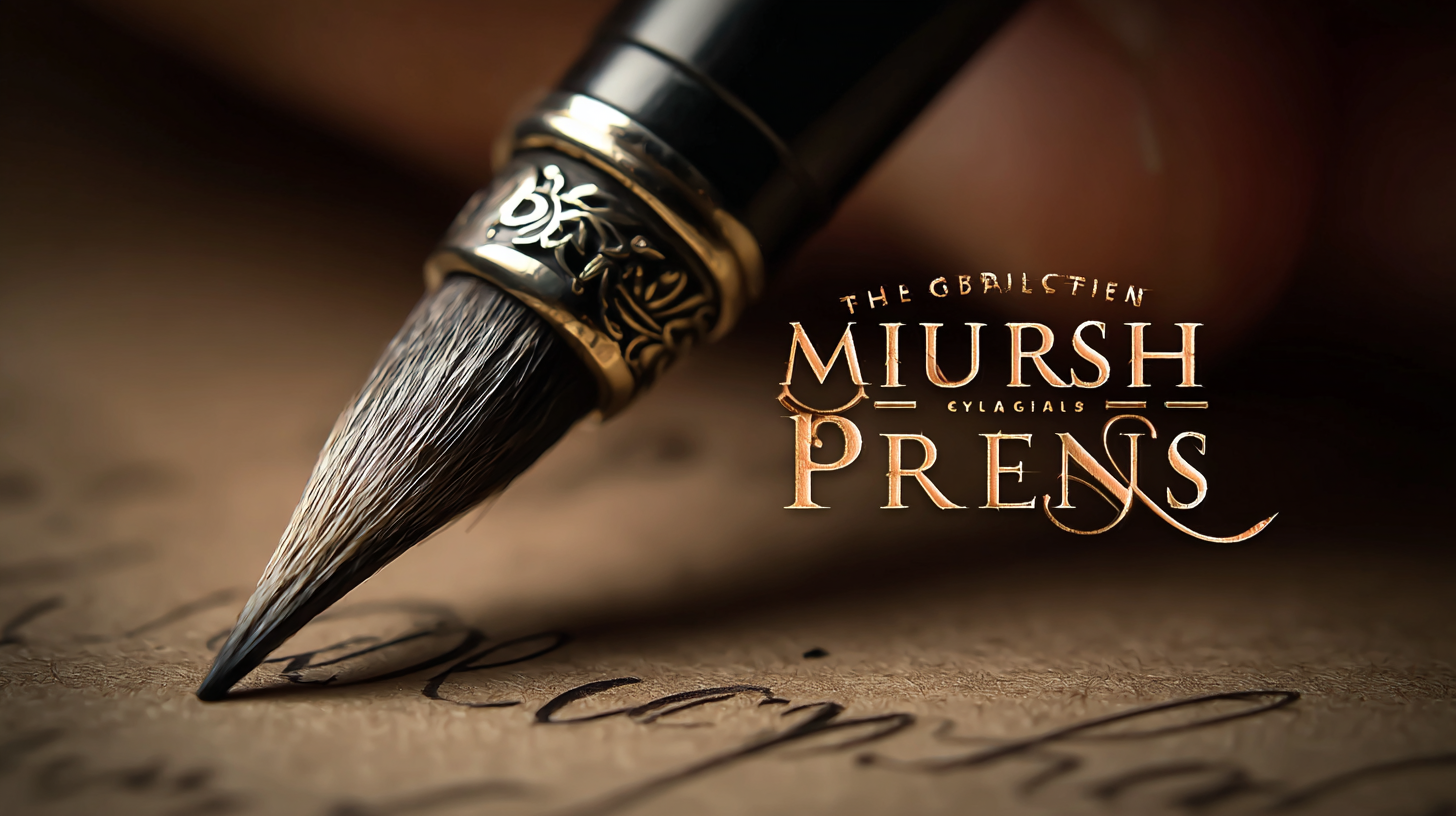In the world of calligraphy, the choice of tools can significantly impact the quality of your work. Recently, the global market for art supplies, particularly brush pens, has seen a remarkable surge, with reports indicating a growth rate of about 5.4% annually from 2022 to 2027. This boom is largely attributed to the rising interest in creative hobbies, fueled by social media platforms showcasing stunning calligraphy projects. Among the plethora of options available, finding the best brush pens for calligraphy is essential for both beginners and seasoned artists alike. These tools not only enhance the expressive capabilities of a calligrapher but also ensure that their creations exhibit durability and precision. As the Chinese manufacturing sector continues to innovate and produce high-quality brush pens, there has never been a better time to explore the ultimate guide that allows you to master calligraphy techniques while selecting the best products tailored to your artistic needs.

When it comes to calligraphy, one of the most common frustrations artists face is inconsistent ink flow from their brush pens. According to a recent survey by the Calligraphy Society, nearly 60% of pen artists cite this issue as a major hurdle in their creative process. Inconsistent ink flow can lead to uneven strokes and disrupted artistry, making it essential for both beginners and seasoned calligraphers to understand its root causes and solutions.
Several factors can contribute to this flow inconsistency. The quality of the brush pen is crucial; pens with higher-quality nibs tend to provide a smoother ink delivery. A report from the Art Supply Manufacturers Association (ASMA) indicates that 75% of premium brush pens outperform their budget counterparts in terms of reliability and performance. Additionally, ink viscosity and environmental conditions can play a significant role. Maintaining a consistent temperature and humidity level can help ensure better flow, as extreme conditions can cause the ink to thicken or dry out, leading to frustrating interruptions in your work. By addressing these common issues, artists can significantly enhance their calligraphy experience.
When it comes to mastering calligraphy, understanding brush pen tip variations is crucial for achieving your desired style. Brush pens come in different tip sizes and shapes, each offering unique characteristics that can influence your writing experience and the final appearance of your letters. According to a recent industry report, artists and hobbyists who experiment with varying brush pen tips often find that achieving diverse lettering styles becomes significantly easier. The versatility of brush pen tips, from fine to broad, allows for elegant lines and soft transitions, essential for styles like modern calligraphy and brush lettering.

Choosing the right brush pen tip can make a noteworthy difference in your projects. For example, a flexible brush tip allows for dramatic thick-to-thin transitions, which can enhance the overall personality of your designs. Conversely, a stiffer tip might be better suited for precise, controlled lines, making it ideal for simpler, more direct lettering styles. Armed with knowledge about these variations, calligraphy enthusiasts can tailor their tools to complement their creative vision, much like designers select suitable handwriting fonts to infuse personality into their texts. As the market continues to evolve, tapping into the right brush pen techniques can open new avenues for artistic expression.
Choosing the right paper for calligraphy can significantly affect your writing experience and the overall quality of your work. When you begin your calligraphy journey, it's essential to understand that not all paper is created equal. High-quality paper often features a smooth texture, which allows your brush pen's ink to flow effortlessly, resulting in clean lines and crisp lettering. Papers designed specifically for calligraphy typically have a weight and finish that prevent bleeding and feathering, providing a more polished final product.
Beginners might be tempted to practice on any available paper, but this can lead to frustration and unsatisfactory results. Investing in appropriate calligraphy paper can not only enhance your skills but also boost your confidence as you see your letters take shape beautifully. Look for papers that are labeled as bleed-proof or at least have a high ink absorbency. Experimenting with different paper types can also help you discover what feels best for your writing style. Remember, your choice in paper is just as important as the brush pens you select; both play a crucial role in mastering the art of calligraphy.
When diving into the world of calligraphy, overcoming common brush pen problems is crucial, whether you're a beginner or a seasoned pro. One challenge many face is ink flow issues, where the pen may skip or become inconsistent. To troubleshoot this, ensure that your pen tip is properly moistened before you start. For beginners, practicing loading the brush pen with the right amount of ink can significantly enhance the smoothness of each stroke. Additionally, regularly cleaning your pens and maintaining them can prevent dried-out tips and clogged ink channels.
Another common problem is ink bleeding on various types of paper. Choosing the right paper can make all the difference. Opt for papers that are specifically designed for water-based inks, which offer smooth surfaces that allow for precise lettering. If bleeding occurs, consider adjusting your technique; using lighter pressure can help manage the amount of ink released from the brush pen. By mastering these troubleshooting tips and techniques, you’ll elevate your brush pen skills, creating stunning calligraphy that stands out.
| Technique | Description | Common Issues | Solutions |
|---|---|---|---|
| Basic Strokes | Learning the fundamental strokes is essential for calligraphy. | Inconsistent line width | Practice controlling pressure and angle. |
| Letter Formation | Understanding the shape and structure of each letter. | Letters look uneven | Use guidelines to ensure consistent size. |
| Flourishing | Adding decorative elements to your letters. | Flourishes appear cluttered | Simplify and practice balance. |
| Color Blending | Combining different colors for visual interest. | Colors bleed into each other | Allow layers to dry before adding more colors. |
| Paper Selection | Choosing the right paper can affect your results. | Ink bleeds through | Use thicker paper or specialty calligraphy paper. |
Maintaining your brush pens is essential for achieving the optimal performance and longevity that every artist desires. According to a 2022 survey conducted by The Calligraphy Society, nearly 45% of calligraphy artists report that improper care of their brush pens significantly affects their work quality. To counteract this, adopting best practices can make a remarkable difference.
One effective tip is to clean your brush pens regularly after each use. Residual ink can dry and clog the bristles, leading to poor performance. Using a gentle soap solution to rinse the nib can preserve its responsiveness. Additionally, it’s crucial to store your brush pens horizontally or with the nib facing up to prevent ink from settling and ruining the brush tip.
Another key practice is to avoid exposing your brush pens to extreme temperatures or direct sunlight. This can warp the brush and lead to a decrease in ink flow. According to data from the Art Supply Manufacturers Association, consistent exposure to such conditions can decrease the lifespan of your brush pens by up to 30%. By following these guidelines, you can ensure your brush pens remain in excellent condition, helping you create beautiful calligraphic work for years to come.

